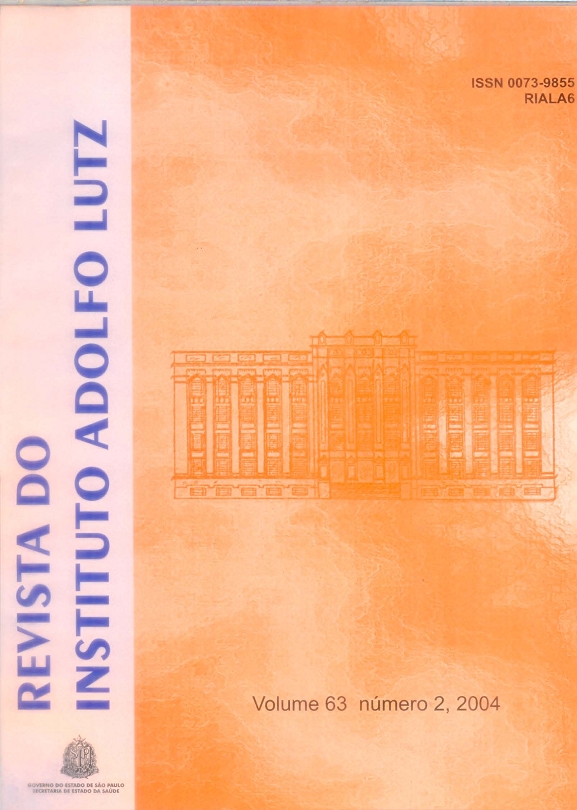Abstract
Cyanobacteria (blue-green algae) are most ancient photosynthetic prokaryotes organisms originated from pre-Cambrian era, which have adapted to several habitats, from thermal springs to humid ground. These organisms appear abundantly in fresh water forming blooms under determined ambient conditions, such as high luminosity, high temperature, and high nutrient concentration. Cyanobacteria produce some types of toxins such as microcystins (MC), which are one of the most important one due to its toxicity. Microcystins are heptapeptides formed by five invariable and two variable amino acids. More than 60 microcystins have been chemically identified. It has known that one of these toxins, the MC-LR (leucine, arginine) induces intracellular enzymes (phosphatases) inhibition, causing alteration in the cell structure. Sub-lethal doses of this hepatotoxin have been associated with malignancy development. The aim of the present study was to determine the concentration of microcystins in water used for hemodialysis procedure. Water samples were collected from hemodialysis clinics located in the State of São Paulo - Brazil from April/2002 to March/2003, by means of routine official visit of the Sanitation Inspection Committee. Microcystins concentrations were determined by means of commercially available enzyme immunoassay [ELISA (Envirologix Inc)]. ELISA kit was tested , and a standard curve with...
References
1. Agujaro, F.L.; Lussari, F.J. Florações de cianobactérias potencialmente tóxicas nas bacias dos rios Piracicaba, Capivari e Jundiaí-Estado de São Paulo-Brasil. In: Seminário Latino-Americano sobre cianobactérias tóxicas: Qualidade de água e saúde pública, Rio de Janeiro, RJ. Resumos. Brasília: MS/FUNASA, 2001, p.6.
2. Azevedo, S.M.F.O. et al. First report of microcystins from a Brazilian isolate of the cyanobacterium Microcystis aeruginosa, Journal of Applied Phycology, 6:261-5, 1994.
3. Azevedo, S.M.F.O. Toxinas de cianobactérias: causas e conseqüências para a Saúde Pública, Revista Virtual de Medicina, 1(3), 1998.
4. Brasil. Ministério da Saúde. Portaria nº 518, de 25 de março de 2004. Estabelece os procedimentos e responsabilidades relativas ao controle e vigilância da qualidade da água para consumo humano e seu padrão de potabilidade, e dá outras providências. Diário Oficial da União. Brasília.
5. Carmichael, W.W. Toxins of fresh water algae. In: Tu, A.T. (ed), Handbook of natural toxins, New York, Marcel Dekker, 1988, p: 121-147.
6. Chorus, I.; Mur, L. Preventative mesures. In: Chorus, I; Bartram, J. (ed), Toxic cyanobacteria in water: a guide to their public health consequences, monitoring and management, London: E & FN Spon, 1999. p: 235-273.
7. Falconer, I.R. Health implications of Cyanobacterial (blue-green algae) toxins. In: Steffensen D.A., Nicholson B.C., editors. Toxic Cyanobacteria Current Status of Research and Management - Proceedings of an International Workshop. Adelaide; 1994.
8. Harada, K.I.; Tsuji, K.; Watanabe, M.F. Stability of microcystins from cyanobacteria. III. Effect of pH and temperature. Phycologia; 35(6):83-8, 1996.
9. Jochimsen, E.M. et al.. Liver failure and death after exposure to mycrocystins at a haemodyalysis in Brazil. New England Journal of Medicine, 338: 873-878, 1998.
10. Kamogae, M. Monitoramento de microcistinas e estudo de parâmetros que favorecem o seu desenvolvimento nas represas de ItaipuCapivara e Três Bocas, Paraná, 2002. [Dissertação de Mestrado, Centro de Ciências Agrárias, Universidade Estadual de Londrina]
11. Mackintosh, C. et al. Cyanobacterial microcystin-LR is a potent and specific inhibitor of protein phosphatases 1 and 2A from both mammals and higher plants, FEBS Letters, 264: 187-192, 1990.
12. Matthiensen, A.; Yunes, J.S.; Codd, G.A. Ocorrência, distribuição e toxicidade de cianobactérias no estuário da Lagoa dos Patos, RS. Rev. Brasil. Biol., 59(3): 361-376, 199.
13. Mur, L.R.; Skulberg, O.M.; Utkilen, H. Cyanobacteria in environment. In: Chrorus, I.; Bartram, J (ed). Toxic cyanobacteria in water: a guide to their public health consequences, monitoring and management. London: E & FN Spon, 1999. p: 15-37.
14. Picanço, M. R. et al. Toxicity of a cyanobacterial extract containing microcystins to mouse lung, Braz. J. Med. Biol. Res., 37(8): 1225-1229, 2004.
15. Pouria, S.et al. Fatal microcystin intoxication in haemolialysis unit in Caruaru, Brazil. The Lancet, 352: 21-26, 1998.
16. Sivonen, K. Cyanobacterial toxins and toxin production, Phycologia, 35(6): 12-24, 1996.
17. Skulberg, O.M.; Codd, G.A.; Carmichael, W.W. Toxic blue-green algae blooms in Europe: a growing problem, Ambio, 13: 244-247, 1984.
18. Vieira, J.M.S. Toxicidade de cianobactérias e concentração de microcistinas em uma represa de abastecimento público da região amazônica do Brasil, São Paulo, 2002 [Tese de Doutorado, Instituto de Ciências Biomédicas, Universidade de São Paulo].
19. Yunes, J.S. et al. Toxic blooms of cyanobacterias in the Patos lagoon estuary, southern Brazil, J. Aquact. Ecosystem Health, 5: 223-9, 1996.

This work is licensed under a Creative Commons Attribution 4.0 International License.
Copyright (c) 2004 Revista do Instituto Adolfo Lutz
